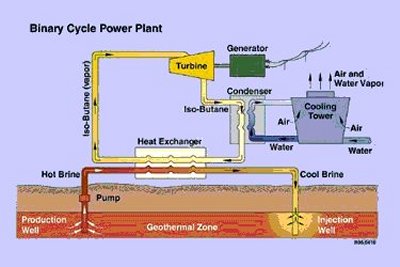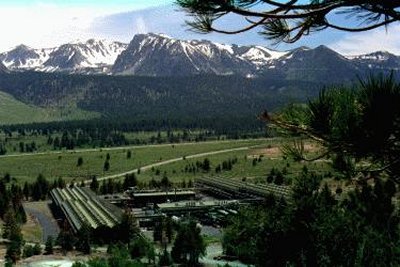binary cycle geothermal plant

Binary cycle power plant. Image credit: Idaho National Laboratory, DOE.

Mammoth Pacific binary power plants at the Casa Diablo geothermal field. Image credit: Idaho National Laboratory, DOE
A binary cycle geothermal plant is one of two types of geothermal power plant, the other being the steam plant. Binary cycle power plants are used with hot water that is at a lower temperature(100°–300°F) than that which supplies steam plants. Such lower temperature resources are much more common. The hot water is passed through a heat exchanger in conjunction with a secondary (hence, "binary plant") fluid with a lower boiling point (usually a hydrocarbon such as isobutane or isopentane). The secondary fluid vaporizes, which turns the turbines, which drive the generators. The remaining secondary fluid is simply recycled through the heat exchanger. The geothermal fluid is condensed and returned to the reservoir.
Because binary plants use a self-contained cycle, nothing is emitted. Energy produced by binary plants currently costs about 5 to 8 cents per kWh. Because these lower-temperature reservoirs are far more common, binary plants are the more prevalent.
